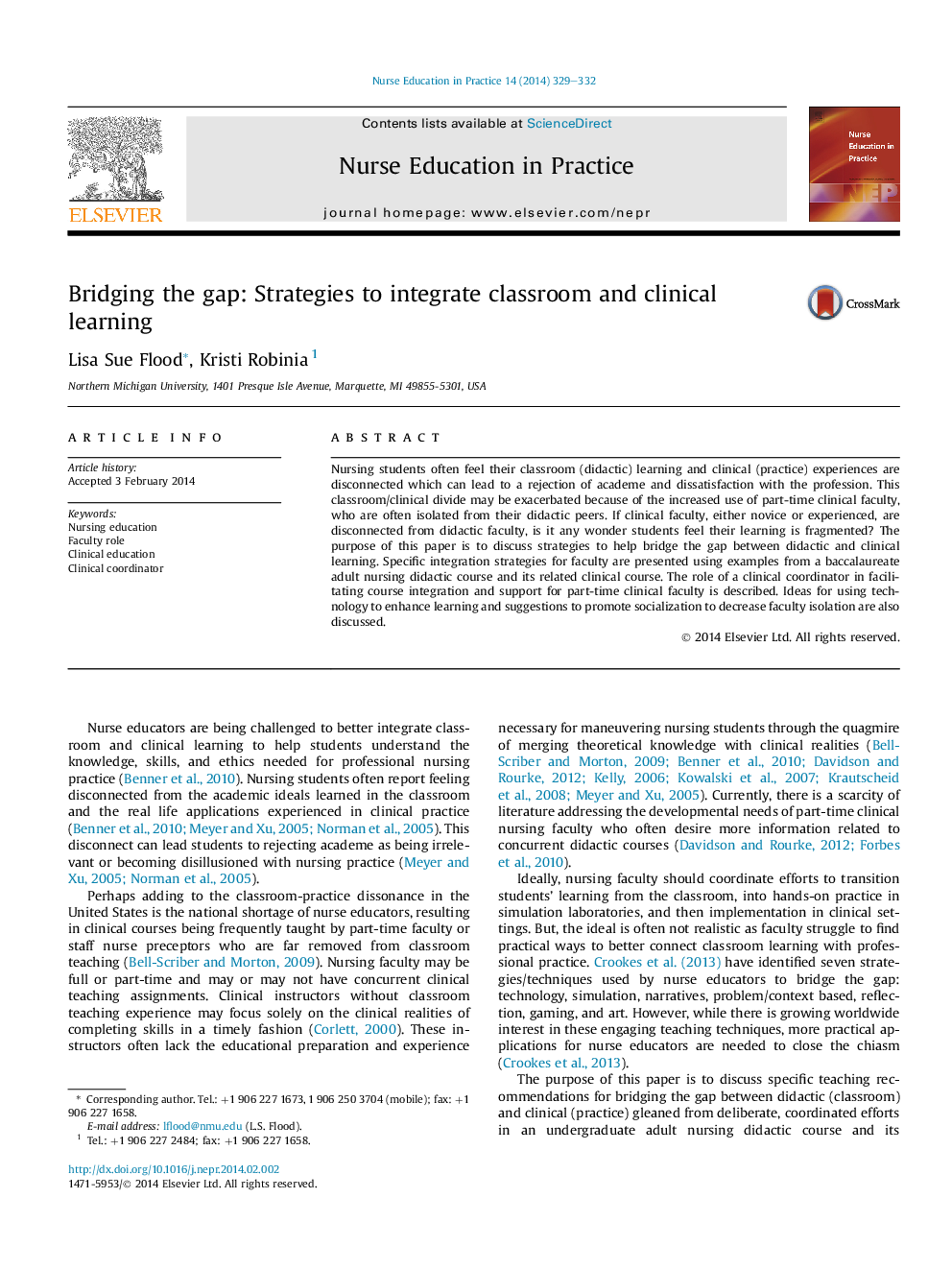| Article ID | Journal | Published Year | Pages | File Type |
|---|---|---|---|---|
| 366710 | Nurse Education in Practice | 2014 | 4 Pages |
Nursing students often feel their classroom (didactic) learning and clinical (practice) experiences are disconnected which can lead to a rejection of academe and dissatisfaction with the profession. This classroom/clinical divide may be exacerbated because of the increased use of part-time clinical faculty, who are often isolated from their didactic peers. If clinical faculty, either novice or experienced, are disconnected from didactic faculty, is it any wonder students feel their learning is fragmented? The purpose of this paper is to discuss strategies to help bridge the gap between didactic and clinical learning. Specific integration strategies for faculty are presented using examples from a baccalaureate adult nursing didactic course and its related clinical course. The role of a clinical coordinator in facilitating course integration and support for part-time clinical faculty is described. Ideas for using technology to enhance learning and suggestions to promote socialization to decrease faculty isolation are also discussed.
